The snake plant (Sansevieria), also known as mother-in-law’s tongue, is one of the most popular houseplants due to its sculptural beauty and low-maintenance nature. However, while it’s known for being drought-tolerant, improper watering is one of the most common ways people harm this hardy plant. To ensure your snake plant remains healthy and vibrant, understanding how often to water it—along with factors that affect this frequency—is essential.
Understanding the Snake Plant’s Water Needs
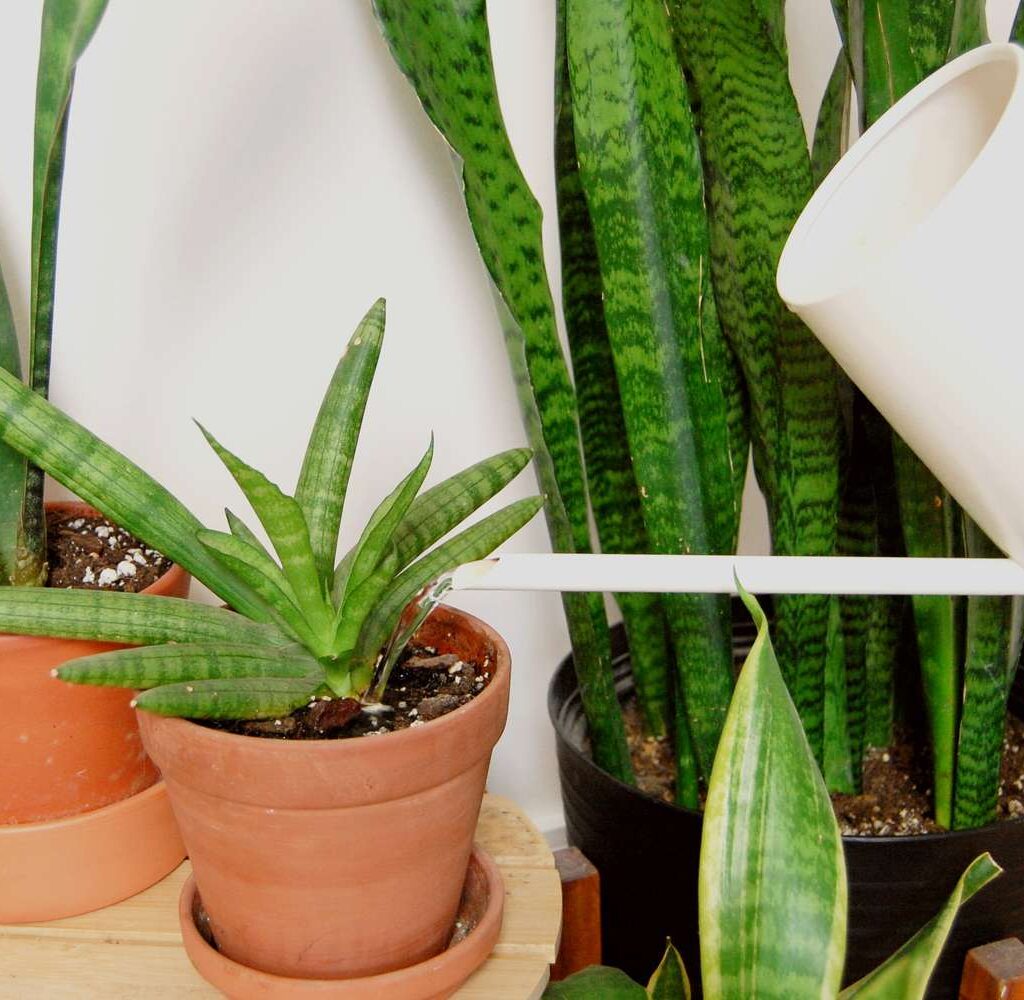
Snake plants are native to arid regions of West Africa, where they thrive in dry, rocky soils and are accustomed to infrequent rainfall. Because of this, they have evolved to store water in their thick, upright leaves, making them particularly tolerant of drought.
This means they do not require frequent watering. In fact, overwatering is a far greater risk than underwatering. Too much moisture can lead to root rot—a deadly condition for this plant.
General Watering Rule:
- Water your snake plant every 2–6 weeks, depending on the season, climate, and indoor conditions.
Factors That Affect Watering Frequency
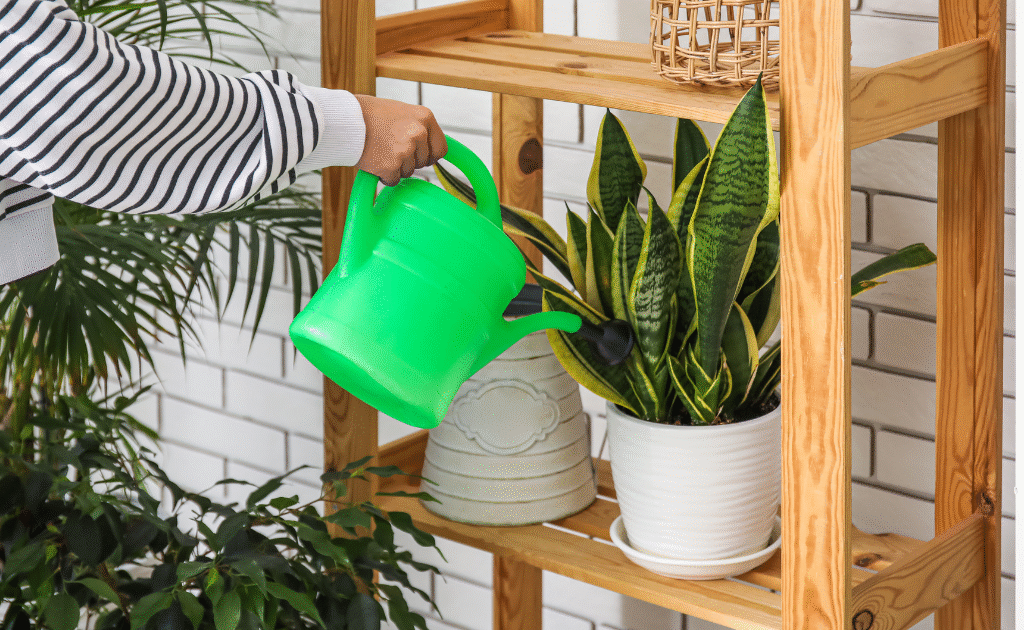
There isn’t a one-size-fits-all schedule for watering snake plants. Several variables influence how often yours needs a drink:
1. Seasonal Changes
- Spring and Summer (Growing Season): Snake plants are more active and may require water every 2–3 weeks.
- Fall and Winter (Dormant Season): Watering should be reduced drastically to once every 4–6 weeks.
2. Indoor Temperature and Humidity
- In warm, dry environments, the soil dries out faster, so watering may be needed more frequently.
- In cooler or more humid homes, the soil retains moisture longer, allowing longer gaps between watering.
3. Potting Soil and Drainage
- Snake plants prefer well-draining soil, such as cactus or succulent mixes.
- Avoid dense or moisture-retentive soils that keep roots sitting in water.
- Always use pots with drainage holes to prevent water accumulation at the bottom.
4. Pot Material and Size
- Terracotta pots wick moisture away faster than plastic or glazed ceramic ones, requiring more frequent watering.
- Larger pots or deep containers may take longer to dry out than smaller or shallower ones.
5. Light Conditions
- In bright, indirect light, snake plants use water more quickly.
- In low-light environments, growth slows, and so does water absorption—extend the time between watering.
Signs Your Snake Plant Needs Water
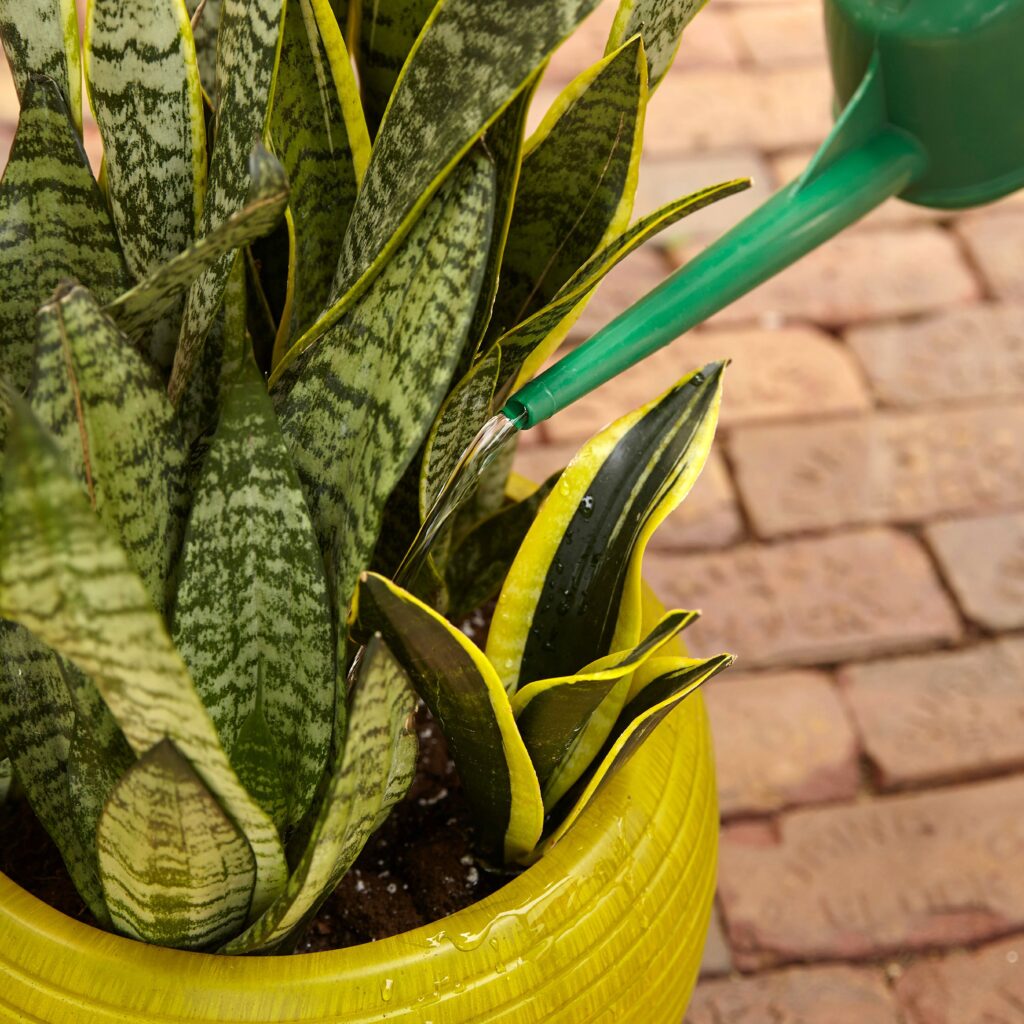
Understanding your plant’s cues can prevent guesswork. Look out for:
- Dry, compacted soil: If the top 2–3 inches of soil are bone dry, it’s probably time to water.
- Slight leaf curling or wrinkling: Indicates water loss and thirst.
- Light, brittle leaves: A sign of underwatering.
Pro Tip: Use your finger or a moisture meter to test the soil before watering.
Signs You’re Overwatering
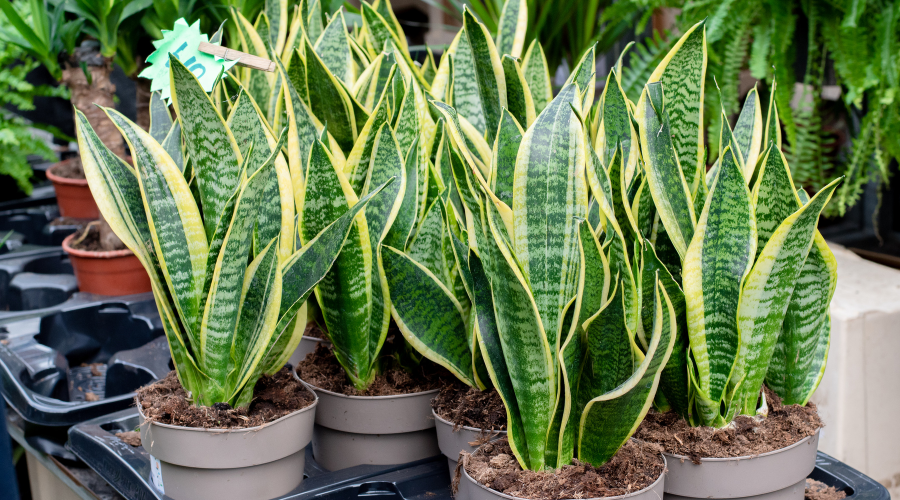
This is the most common mistake with snake plants. Symptoms include:
- Mushy, yellowing leaves
- Foul odor from the soil
- Black, soggy roots when inspected
- Mold or fungus gnats around the base
If you notice these signs, stop watering immediately, and consider repotting the plant into fresh, dry soil.
How to Properly Water a Snake Plant
When it’s time to water, use these best practices:
1. Use the “Soak and Dry” Method
- Water the soil thoroughly until excess water drains out the bottom.
- Discard any water collected in the saucer to prevent the roots from sitting in it.
- Do not water again until the soil is completely dry.
2. Avoid Getting Water on the Leaves
- Water directly at the base to prevent rot or fungal problems on the foliage.
3. Use Room Temperature Water
- Cold water can shock the roots, especially in winter.
Adjusting Watering for Different Environments

1. Indoor Snake Plants
- Water every 2–4 weeks in warmer months, every 4–6 weeks in winter.
- Keep away from cold drafts or direct heat sources like radiators.
2. Outdoor Snake Plants (in warm climates)
- May need water once a week in extreme heat.
- Make sure they’re in well-draining soil and avoid locations with heavy rain.
3. Snake Plants in Offices or Low-Light Spaces
- Water less frequently—around every 4 weeks.
- Monitor humidity from air conditioning or heating systems that affect soil drying speed.
Common Watering Mistakes to Avoid
- Using a Fixed Schedule: Always water based on soil dryness, not calendar days.
- Letting Soil Stay Soggy: Snake plants hate wet feet.
- Misting the Plant: It doesn’t need or benefit from misting like tropical plants do.
- Ignoring Environmental Changes: Seasonal adjustments are crucial.
Frequently Asked Questions (FAQ)
Q: Can snake plants survive without water for a month?
A: Yes, mature snake plants can easily go 4–6 weeks without water, especially in cooler months.
Q: How do I revive a snake plant after overwatering?
A: Remove it from the pot, cut off any mushy or black roots, let it dry for 24–48 hours, and repot in fresh dry soil.
Q: Can I bottom water my snake plant?
A: Yes, but it’s generally more effective to top water and ensure the entire root ball is moistened.
Final Thoughts
Snake plants are among the easiest plants to care for, but their survival depends heavily on proper watering habits. By observing your plant, testing the soil before watering, and adjusting to seasonal and environmental shifts, you can keep your snake plant healthy for years to come.
Remember: when in doubt, it’s better to underwater than overwater a snake plant. Its natural drought resistance makes it more forgiving of neglect than excess attention.
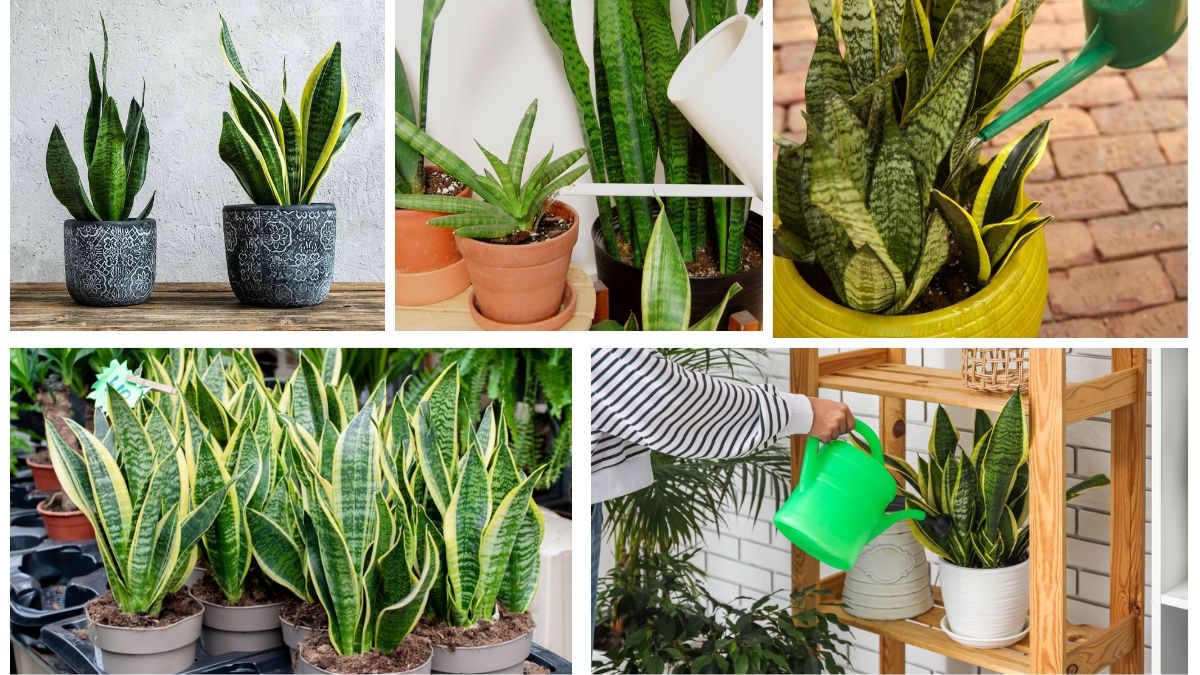



Leave A Comment